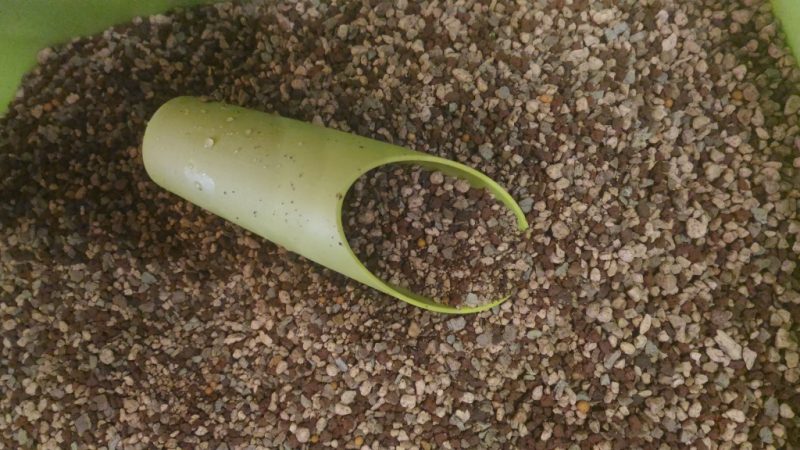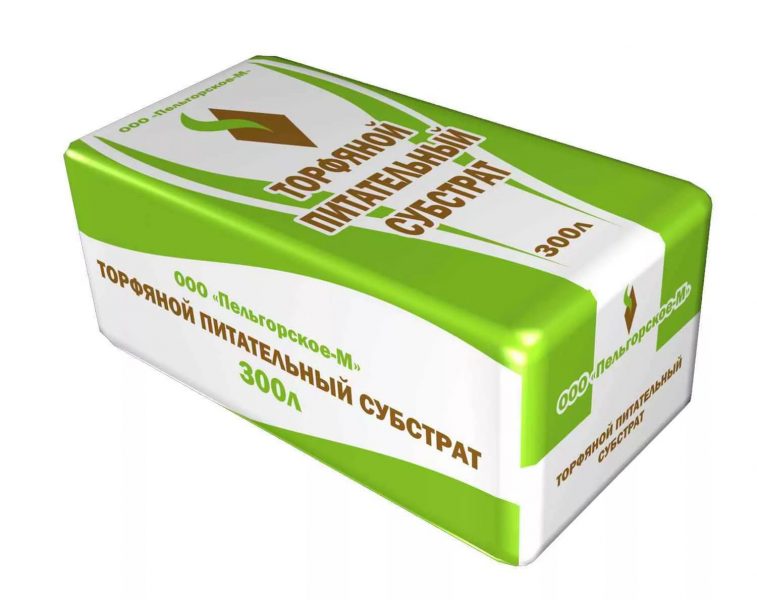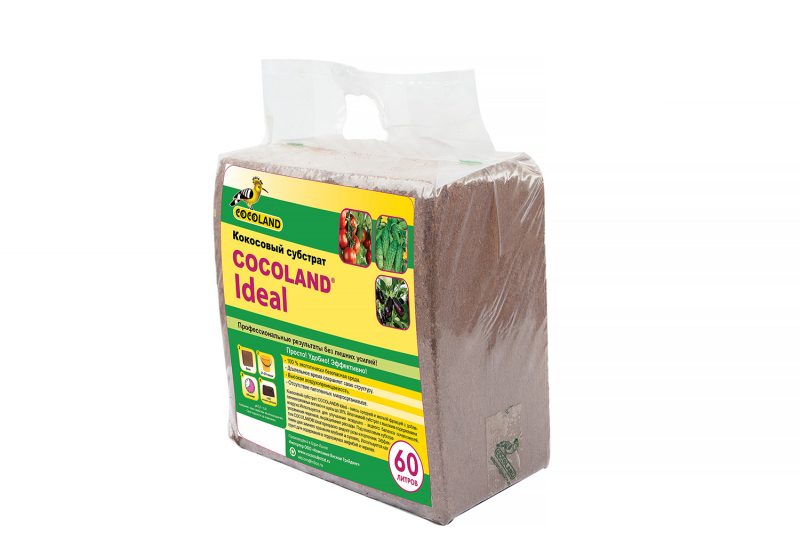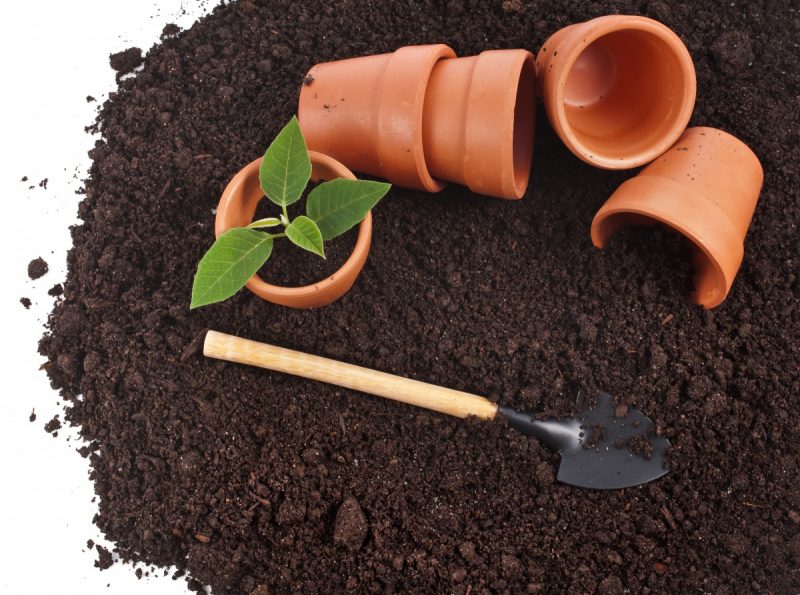The roots take from the soil everything necessary for leaves, flowers and fruits. The substrate absorbing a solution of nutrients serves as a substitute for natural soil. Peat, coconut fiber, expanded clay, sand, and many other organic and inorganic materials possess the necessary properties.
Material Content:
Substrate - what is it?
A substrate is a land mixture that is used to plant adult plants, obtain seedlings and rooting cuttings. It is very important to observe a certain ratio of organic and inorganic components that affect the plant body.

In hydroponics and substrate culture, peat and some building materials purified from impurities are most widely used. Sand, fine gravel, expanded clay do not contain nutrients for plants, but can be used as a substrate due to a number of useful qualities. A nutrient solution is added to inert materials when watering.
How to choose a substrate for plants
Humus, macro- and microelements that are easily absorbed by the roots, are most found in humus and compost. These organic fertilizers increase the nutritional value of any soil mixture for plants. Cons humus and compost - a high risk of preservation of pathogens, the habitat of pests.

With the help of peat and sand create light substrates that some plants need. Clay is added to the soil mixture for better retention of the root system, as well as for crops that prefer heavy soils.
Peat is the best substrate for seedlings. Relatively cheap natural material adsorbs water well with nutrients, gradually gives the solution to the roots.The minus of this material is its acidity. To obtain a substrate with a neutral pH value, peat and chalk are mixed (per 1 m3 - 4-5 kg).
Cacti, succulents, violets are recommended to be grown in special soil mixtures, which are sold in flower shops. Ordinary garden or garden land is not suitable for these groups of plants. Sand is necessarily added to the succulents mixture. Or grown in sand using a nutrient solution.
When using gravel as a substrate for growing cloves, organic material is added to it - sphagnum peat or sawdust. Primroses prefer heavy substrates more. A mixture of equal parts of gravel, turf land, clay and sand is prepared for this flower culture. Gravel substrate is mainly used for unpretentious alpine plants.
The main types of substrates
Many organic materials are used to create soil mixtures: peat, bark, sawdust, moss, shavings. Inert mineral substrates, synthetic substances (polystyrene chips, polyethylene granules, ion-exchange resins) are used.
Peat

The most commonly used sphagnum peat of high bogs. The natural mixture contains nutrients that are easily absorbed by plants. Peat substrate quickly gives water and nutrients to the roots, so more frequent watering and feeding are necessary.
Coconut Fibers

Lightweight, breathable, moisture-proof enough organic material, harmless to plants. Coconut substrate in briquettes is used independently and in a mixture with other components. Can be mixed with garden soil in a 1: 1 ratio for indoor flowers, seed germination.
Mineral materials
They are used in pure form, as well as in various mixtures. Recommended particle sizes of granite crushed gravel, expanded clay and perlite in hydroponics and substrate culture - from 2 to 5 mm, sand - from 1 to 2 mm.

Advantages of the mineral substrate:
- relative lightness;
- chemical inertness;
- breathability;
- non-toxicity;
- moisture capacity;
- sterility;
- strength.
Expanded clay - light, porous, water-intensive lumps of gray-brown color, having a diameter of 1.5–3 cm. Under factory conditions, the material is obtained by firing clay. Expanded clay must be crushed into small pieces before use.
Vermiculite is a porous material consisting of natural silicates. Before use, it is necessary to bake in the oven. Vermiculite increases in size when heated. Before planting a plant, a drainage layer consisting of pebbles and coarse sand is laid on the bottom of the pot, container, or other container. Vermiculite is poured on top.
It is interesting:substrate - what is
Ready substrate - detailed composition
For vegetables, indoor plants produce ready-made soil mixtures based on peat. Universal peat substrate has several advantages: low weight, standard quality, the whole set of nutrients in the composition.

Components of the Substratum Durpeta soil mixture for vegetables and flowering plants:
- sphagnum peat;
- lime flour;
- fertilizers with trace elements;
- stimulator of water absorption.
Peat quickly gives out nutrients, so manufacturers add mineral fertilizers. Such mixtures are ideal for sowing seeds, growing seedlings. Unfortunately, they dry out faster than soil, so more frequent watering is required.
The substrate for orchids consists of pine bark, peat, moss. Bark improves breathability. Sphagnum peat adsorbs nutrients and moisture. The addition of a small amount of charcoal facilitates disinfection. Vermiculite is included in the mixture for better aeration, preventing caking and drying out.
How to make soil at home
Most commonly used for making the soil mixture are turf, leafy soil, humus, peat, sand. The ratio of the components for different plants are different.

Soddy ground is cut with plates in the meadow, cleaned of the roots. Leafy land is prepared from fallen leaves of fruit trees, maple. Stacked in piles and after 2-3 years receive a loose, but low-nutrient soil. Sheet land resembles peat substrate in properties. This material is added to soil mixtures for sowing seeds and planting cuttings, and is used for growing ferns.
Sand gives friability to any soil. Depending on the composition of the earth, you can add from 30 or 10% sand. Sand and gravel must be cleaned of impurities before use. Then the material is sieved to obtain fractions of the desired size. The sand is calcined in the oven, washed with water several times. Clay provides density. A small amount of this material is added to light soil mixtures.
Rules for using the substrate
If sphagnum bog peat is added, lime or chalk is additionally added to neutralize acidity. You can not add anything to purchased peat substrates. They are completely ready for use.

Before filling the container for plants with soil mixture, a drainage layer is poured onto the bottom. The roots are deepened into the prepared substrate so that they firmly hold the plant in an upright position.
The soil is moistened from above with normal watering. Or they fill another container with a nutrient solution, into which the roots can penetrate through the substrate and the layer of air between the two pots. There is another method of supplying plants with everything necessary - filling the pan with a nutrient solution when watering from below.












